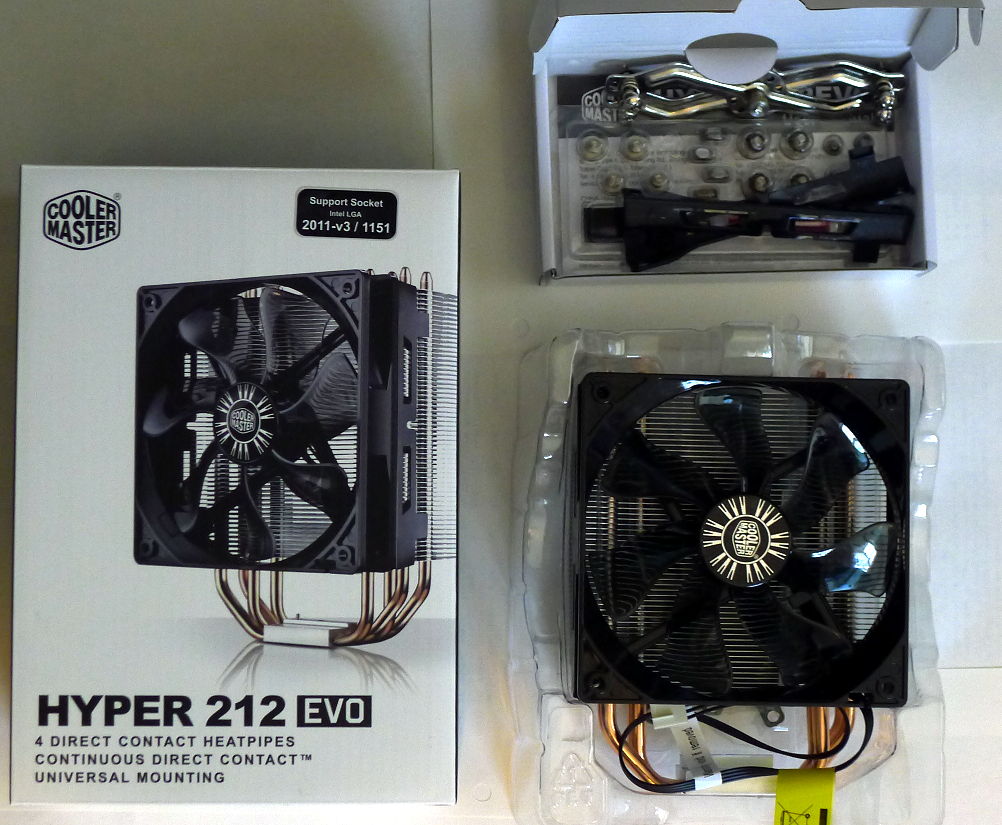
The heatsink is 158.5 mm tall, which means that the Hyper 212 EVO will fit in most mid-tower computer cases. It measures 116 x 51 x 158.5 mm (4.7 x 3.0 x 6.2 inches) without the fan. The Hyper 212 EVO weighs in at 465 grams without the fan. The picture below shows that the Hyper 212 EVO’ base plate is entirely flat the heatpipes are close to one another and brushed so that there are no holes between them. The picture above shows that the Hyper 212 Plus’ base plate is not entirely flat the heatpipes are surrounded by small channels which take the bulk of applied thermal paste. The Hyper 212 Evo uses Continuous Direct Contact technology of placing the heatpipes into the base, while the Hyper 212 Plus used the less advanced Direct Contact. Other than that, the coolers are identical but that’s where the Hyper 212 EVO comes in. A small notch on the top of the base also differentiates the Hyper 212 Plus from its predecessor, where the notch prevents the cooler from turning or sliding.

The updated Hyper 212 Plus comes with plastic brackets that are more practical and take up less space than before. That’s not to say that the updated Hyper 212 Plus is identical to the initially launched Hyper 212 Plus. The Hyper 212 Plus comes with Direct Contact technology, meaning that the heatpipes are in direct contact with the CPU.

The single tower heatsink used on the Plus version remained to date. The Hyper 212 was redesigned in full in 2009 and renamed to Hyper 212 Plus. It had a classic copper base with four heatpipes branching out into two separate tower heatsinks (picture below).

Namely, the first Hyper 212 was launched in 2007. The Hyper 212 EVO is a result of redesigning the Hyper 212 Plus, but the story of Hyper 212 series started much earlier.


 0 kommentar(er)
0 kommentar(er)
